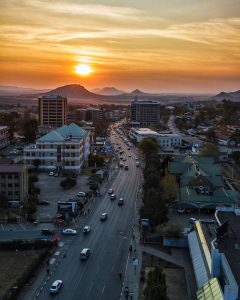The World Bank has revised its growth forecast for sub-Saharan Africa, predicting a modest economic expansion of 3% for the region in 2024, down from an earlier estimate of 3.4%. This adjustment primarily stems from the ongoing civil conflict in Sudan, which has severely impacted the country’s economy and, consequently, the broader regional outlook.
Despite this downward revision, sub-Saharan Africa is still expected to outperform last year’s growth rate of 2.4%. Increased consumer and business spending across the region is credited with driving this optimistic trend. The World Bank’s report, titled “Africa’s Pulse,” outlines these economic projections and highlights the various factors influencing the region’s recovery.
Andrew Dabalen, the World Bank’s chief economist for Africa, acknowledged the slow pace of recovery but noted a positive trend in inflation rates across many countries. He suggested that declining inflation may enable governments to lower high interest rates, which could further stimulate economic activity.
However, the report also warns that ongoing conflicts, alongside natural disasters such as droughts and floods, pose significant risks to the region’s growth prospects. Without the destabilizing effects of the war in Sudan, the region’s growth for the upcoming year could have been approximately 0.5% higher, highlighting the substantial impact of conflict on economic stability.
Among the region’s largest economies, South Africa is projected to grow by 1.1% this year, with an anticipated increase to 1.6% by 2025. Nigeria’s economy is expected to expand by 3.3% in 2024, rising to 3.6% by 2025, while Kenya is forecasted to achieve a growth rate of 5% this year. These projections underscore the varying trajectories of different countries within sub-Saharan Africa, influenced by their unique economic conditions and challenges.
Historically, between 2000 and 2014, sub-Saharan Africa experienced robust growth, averaging 5.3% annually. However, this growth trajectory slowed dramatically due to falling commodity prices and the exacerbating effects of the COVID-19 pandemic, which had a profound impact on economic activity across the continent.
Many countries in the region are grappling with high levels of debt, which complicates their ability to invest in crucial economic development initiatives. Dabalen has issued a cautionary warning regarding the potential consequences of persistent debt burdens. He emphasized the urgent need for increased investment in the region to facilitate a quicker recovery and alleviate poverty.
Debt-related issues are particularly pronounced in countries like Kenya, where widespread protests erupted earlier this year in response to rising taxes. Governments have been resorting to borrowing at elevated interest rates rather than securing more affordable loans, resulting in substantial debt service payments that further strain public finances.
The World Bank’s report emphasizes the importance of creating a stable economic environment conducive to investment. This involves not only addressing debt levels but also enhancing governance and regulatory frameworks to attract both domestic and foreign investment. The agency advocates for policies that foster sustainable growth and development across the continent.
In addition to economic forecasts, the report highlights the significance of social stability and conflict resolution as essential components of sustained growth. Efforts to mitigate the impacts of violence and civil unrest are critical for creating a conducive environment for economic activities.
Looking ahead, the World Bank calls for concerted efforts from governments, international organizations, and private sectors to work collaboratively towards overcoming these challenges. The agency underscores that achieving long-term economic stability in sub-Saharan Africa will require a multifaceted approach that addresses both immediate economic concerns and the underlying issues contributing to conflict and instability.
In summary, the World Bank’s revised growth forecast for sub-Saharan Africa reflects the complexities facing the region as it navigates economic recovery amid significant challenges. While some countries exhibit positive growth trajectories, the overarching influence of conflict, debt, and governance issues underscores the need for strategic interventions to foster a more resilient economic landscape. The future of sub-Saharan Africa’s growth will depend on how effectively these challenges are managed in the coming years.








